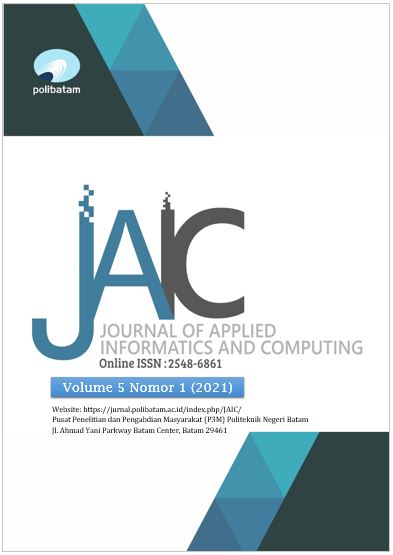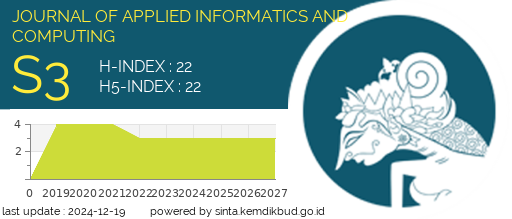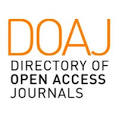Sistem Informasi Lelang Pengadaan Barang Online Menggunakan Metode Analytical Hierarchy Process (AHP) Pada PTAsia Pacific Fibers
DOI:
https://doi.org/10.30871/jaic.v5i1.2642Keywords:
AHP, Analytic Hierarchy Process, LelangAbstract
The online auction system in the procurement of goods can make it easier to supervise and avoid fraud in the auction process, thereby creating transparency and accountability of data in the auction process to auction participants. The method used for data processing using AHP (Analytic Hierarchy Process). The stages in the AHP method begin with the process of defining the problem, creating a hierarchical structure that begins with a general purpose, followed by criteria and choice alternatives, Creating a paired comparison matrix, normalizing data, calculating the eigenvector value and testing its consistency, calculating the eigenvector of each Pairwise comparison matrix, Test the consistency of the hierarchy. If it does not comply with CR <0.100 then the assessment must be repeated. Calculations using the AHP (Analytic Hierarchy Process) method are faster than manual calculations so they can be more efficient and the level of data accuracy is close to perfect.
Downloads
References
A. M. Sari, "Aplikasi Situs Web Penjualan Hijab Online," Paradigma, 2017.
R. K. Tanesia, "Studi Efektivitas Pengadaan Barang Dan Jasa Pemerintah Secara Tradisional dan Elektronik," J. Tek. Sipil, 2016.
Z. Azhar, "Penerapan Metode Analytical Hierarchy Process Dalam Pemilihan Bibit Jagung Unggul," JURTEKSI (Jurnal Teknol. dan Sist. Informasi), 2020.
Fendi Nurcahyono, "Pembangunan Aplikasi Penjualan Dan Stok Barang Pada Toko Nuansa Elektronik Pacitan," Sentra Penelit. Eng. dan Edukasi, 2012.
M. I. Akbar, "Analisis Dan Perancangan Sistem Informasi Persediaan Produk Berbasis Web Pada PT AI," SISTEMASI, 2019.
S. Kosasi and J. S. Informasi, "Perancangan Sistem Lelang Online dalam Pengadaan Barang dan Jasa," J. Sist. Inf., 2015.
T. Saaty and L. Vargas, Models, methods, concepts & applications of the analytic hierarchy process. 2012.
Abdul Kadir, "Pengenalan Sistem Informasi Edisi Revisi," Edisi Revisi. 2014.
D. Purnomo, "Model Prototyping Pada Pengembangan Sistem Informasi," J I M P - J. Inform. Merdeka Pasuruan, 2017.
H. Jogiyanto, "Sistem Teknologi Informasi," Ranc. Bangun Sist. Inf. Penjualan Pada Mina Mark. Benowo, 2005.
T. Makmur, "Teknologi Informasi," Info Bibl. J. Perpust. dan Ilmu Inf., 2019.
A. Setiawan, R. Soelaiman, and R. J. Akbar, "Rancang Bangun Aplikasi Pelelangan Online (E-Auction) berbasis Perangkat Bergerak Android," J. Tek. ITS, 2017.
"Prototype Model," in Encyclopedia of Production and Manufacturing Management, 2006.
Fernanda Yuwanda, "Black Box Testing | Pengujian Perangkat Lunak," 14 April, 2016. .
I. Bastian, R. D. Winardi, and D. Fatmawati, "Metoda Wawancara," Metod. Pengumpulan dan Tek. Anal. Data, 2018.
H. Hasanah, "Teknik-Teknik Observasi," At-Taqaddum, 2017.
E. Darmanto et al., "Penerapan Metode Ahp ( Analythic Hierarchy Process ) Untuk," J. SIMETRIS, 2014.
2013 Rosa & Salahuddin, "UML, Use Case Diagram, Activity Diagram, Class Diagram," in Rekayasa Perangkat Lunak Terstruktur, 2013.
R. Dachroni, R. Erafidah, E. Mandala, and S. Sepriandi, "Implementasi Sistem Lelang Elektronik (E-Procurement) Oleh Pemerintah Kota Tanjungpinang," JDP (JURNAL Din. PEMERINTAHAN), 2019.
M. Putriningsih, S.P, Riyanto, B. R, "Prosedur Penjualan Lelang Atas Aset Kendaraan Milik Universitas Diponegoro," Diponegoro Law J., 2016.
Downloads
Published
How to Cite
Issue
Section
License
Copyright (c) 2021 Arif Maulana Yusuf

This work is licensed under a Creative Commons Attribution-ShareAlike 4.0 International License.
Authors who publish with this journal agree to the following terms:
- Authors retain copyright and grant the journal right of first publication with the work simultaneously licensed under a Creative Commons Attribution License (Attribution-ShareAlike 4.0 International (CC BY-SA 4.0) ) that allows others to share the work with an acknowledgement of the work's authorship and initial publication in this journal.
- Authors are able to enter into separate, additional contractual arrangements for the non-exclusive distribution of the journal's published version of the work (e.g., post it to an institutional repository or publish it in a book), with an acknowledgement of its initial publication in this journal.
- Authors are permitted and encouraged to post their work online (e.g., in institutional repositories or on their website) prior to and during the submission process, as it can lead to productive exchanges, as well as earlier and greater citation of published work (See The Effect of Open Access).












